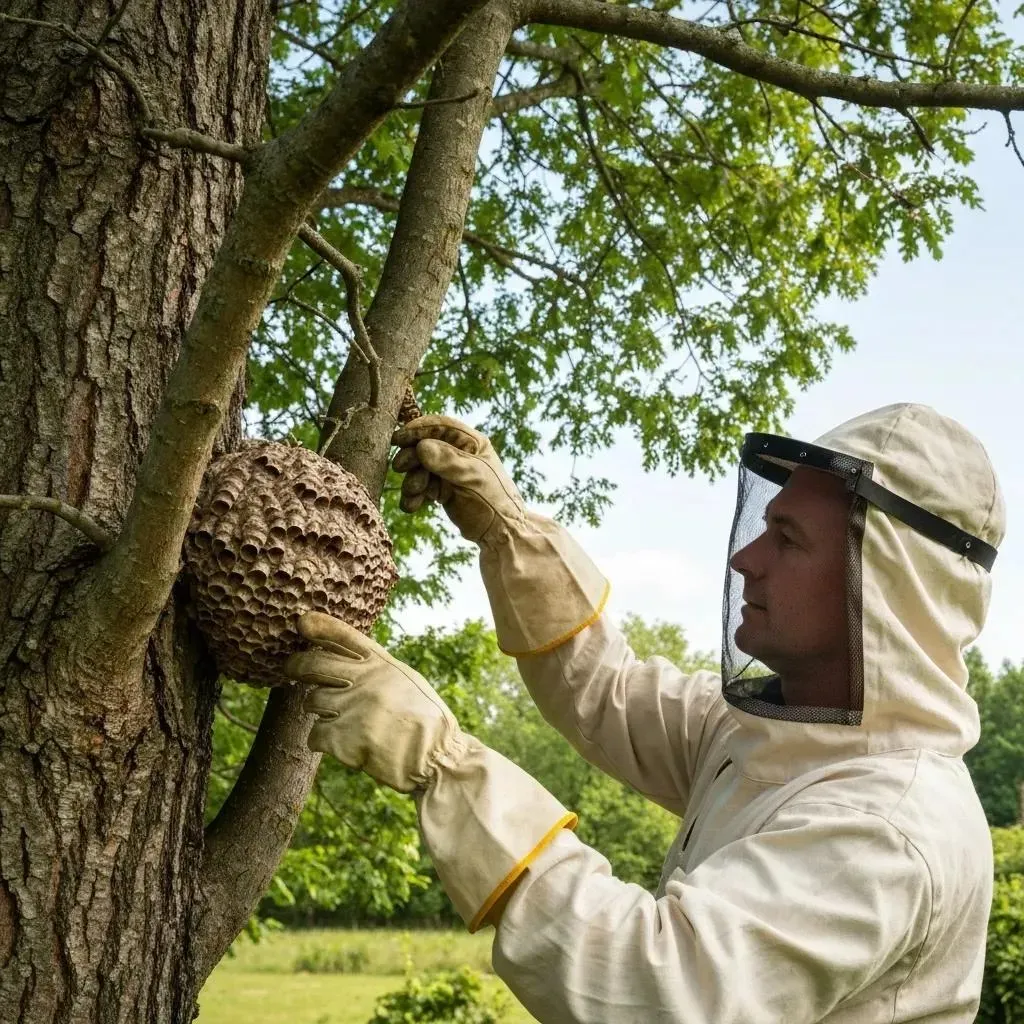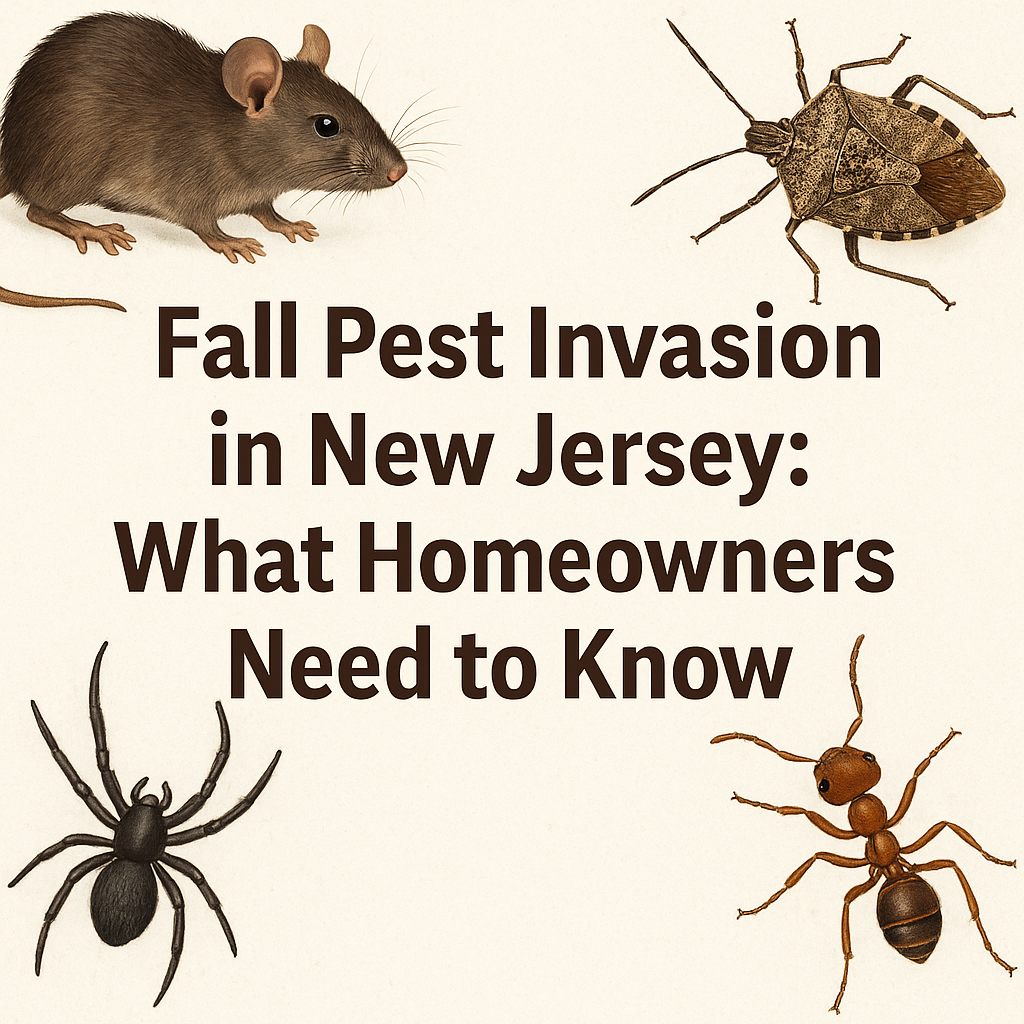Tools for Effective Bed Bug Control to Keep Your Home Safe
Written by

An integrated pest management approach that combines sanitation, exclusion, and strategic trapping is key to both immediate and long-term bed bug protection. By following the preventive measures and maintaining vigilance through regular inspections, homeowners can significantly reduce the risk of re-infestation while safeguarding their health and property. Whether through DIY methods or professional intervention, a well-informed strategy is vital for achieving a healthier, bed bug-free living environment.
Bed bugs reveal themselves through bites, droppings, shed skins, and live
insects. Recognizing these signs early helps you act before the
infestation spreads.
Bed Bug Biology and Behavior
Bed bugs are small, flat, oval, reddish-brown insects that feed on blood, typically at night. They hide in cracks and crevices near their host, such as mattresses, bed frames, or furniture [1]. Their bites cause itchy welts, and finding droppings, shed skins, or live insects confirms their presence [1].
Potter, M.F., Bed Bugs (2018)
Where Do Bed Bugs Hide: Typical Infestation Spots
Bed bugs conceal themselves in cracks and crevices within two meters of host activity. Common harborage sites include:
- Mattress seams and tufts beneath covers.
- Bed frame joints, headboards, and footboards.
- Baseboards, electrical outlets, and behind wall-mounted headboards.
- Inside upholstered furniture, curtain folds, and carpet edges.
Regular
inspection of these areas helps locate hidden bugs and prevents small infestations from growing.
Unlike house dust mites, fleas, or carpet beetles, bed bugs are flat, oval, reddish-brown, and about 5 mm long. They feed on blood, leaving visible droppings and eggs, whereas other pests exhibit different behaviors and signs.
How Does Bed Bug Inspection Help in Effective Control?
A thorough inspection maps the extent of the infestation, pinpoints harborage sites, and guides the selection of control methods to target active areas and reduce chemical use.
What Are the Best Techniques for Bed Bug Inspection?
Effective
inspection combines a visual walkthrough with detection devices. Check seams, baseboards, and furniture using a flashlight and stiff card. Placing interceptor cups under bed legs and using canine scent detection can further increase accuracy.
When Should You Call a Professional for Bed Bug Inspection?
Hire a licensed pest professional when there are more than ten live bugs per room, when multiple rooms are affected, or when DIY attempts have failed. Professionals use integrated pest management protocols and EPA-approved insecticides to ensure eradication.
How to Use Bed Bug Detection Tools and Devices
Detection tools such as interceptor traps, active monitors using CO₂ or heat attractants, and canine teams complement visual inspections and help map hotspots for targeted treatment.
What Are the 8 Proven Bed Bug Control Methods?
Method Mechanism Primary Benefit Why Essential Heat Treatment Exposes bugs to ≥50 °C to denature proteins Eliminates all life stages Penetrates walls, furniture, and luggage
Freezing Maintains ≤ –18 °C to halt metabolism Non-chemical and safe for fabrics Ideal for
clothing, toys, and luggage Steam Cleaning Applies ≥100 °C wet steam Kills on contact Reaches cracks without chemicals Chemical Treatment Uses pyrethroids,
deltamethrin,
neonicotinoid Rapid knockdown and residual control Targets full life cycle Natural Remedies
Diatomaceous earth and essential oils
Environmentally friendly Prevents infestations in sensitive areas Mattress Encasements Seals mattress/box spring Traps bugs and prevents feeding Blocks entry and forces bugs into treated zones Vacuuming Physically removes eggs and nymphs Reduces populations immediately Lessens chemical reliance
Fumigation Sulfuryl fluoride gas Whole-structure eradication For severe and widespread infestations
Integrated Pest Management for Bed Bugs
IPM combines multiple control methods to manage pests effectively while minimizing environmental impact [2]. This includes inspections, non-chemical treatments like heat and steam, and targeted insecticides [2].
National Pest Management Association, Bed Bug Best Management Practices (2023)
How Does Heat Treatment Eradicate Bed Bugs?
Heat treatment raises room temperature above 50 °C for about four hours, denaturing proteins in eggs, nymphs, and adults. Mobile heaters and thermal probes ensure even heat distribution throughout cracks, luggage, and furniture.
What Are the Pros and Cons of Chemical Treatment for Bed Bugs?
Chemical treatments with insecticides like pyrethroids and neonicotinoids provide rapid knockdown and residual protection up to 90 days. However, they can lead to
pesticide resistance,
toxicity concerns for pets and occupants, and require professional calibration.
Which Natural Bed Bug Remedies Are Effective?
Diatomaceous earth works by absorbing lipids from the
exoskeleton, causing dehydration. Essential oils such as tea tree and lavender show repellent properties and, when combined with other botanical remedies like neem
oil, can disrupt feeding and egg-laying.
How to Perform DIY Bed Bug Control Safely and Effectively?
DIY control starts with laundering bedding and curtains at ≥60 °C, vacuuming seams and cracks, and applying diatomaceous earth along baseboards. Use steam cleaners for upholstery, encase mattresses, and freeze items in sealed bags at –18 °C for several days. Always follow insecticide label instructions and wear protective gloves.
What Role Do Mattress Encasements Play in Bed Bug Control?
Mattress encasements are zippered barriers that trap existing bugs and prevent new ones from infesting the mattress and box spring. They disrupt feeding cycles and force any survivors to starve over time.
How Can Vacuuming and Steam Cleaning Help Remove Bed Bugs?
Vacuuming removes eggs, nymphs, and adults from seams and crevices; be sure to dispose of
vacuum bags in sealed
plastic bags. Steam cleaning, which uses steam at ≥100 °C, kills bugs on contact and sanitizes fabrics without chemicals.
When Is Fumigation Necessary for Bed Bug Extermination?
Fumigation with sulfuryl fluoride is reserved for cases where infestations penetrate wall voids, crawlspaces, or attics, or when localized treatments have failed. It ensures whole-structure coverage but requires vacating the premises and obtaining appropriate permits.
How to Combine Multiple Methods for Best Results?
Using a combination of non-chemical and chemical methods—such as heat treatment followed by residual
insecticide, or vacuuming and steam cleaning before applying encasements—can produce synergistic effects. Follow-up inspections two weeks after treatment help confirm success and prevent resurgence.
What Are the Best Bed Bug Prevention Strategies to Keep Your Home Pest-Free?
Preventive measures include regular inspections, installing protective barriers, and practicing mindful travel habits to block introductions and early establishment of bed bugs.
How to Prevent Bed Bug Infestations During Travel and After Moving?
Treat suitcases with vacuuming and diatomaceous earth before bringing them indoors. At hotels, inspect mattresses and headboards, and keep luggage elevated. After travel, wash and dry clothing at high heat and vacuum luggage interiors; store suitcases in plastic bags to reduce hitchhikers.
What Home Maintenance Practices Reduce Bed Bug Risks?
Regularly inspect baseboards, bed frames, and furniture seams for droppings. Seal cracks in walls, repair peeling wallpaper, keep clutter to a minimum,
vacuum carpets weekly, and launder bedding in hot water. Applying a
perimeter
insect growth regulator around baseboards further disrupts bed bug development.
How to Use Bed Bug Proof Covers and Barriers Effectively?
Install zippered mattress and box spring encasements rated for bed bug protection and combine them with bed leg interceptors. Using double-sided tape or diatomaceous earth at furniture legs creates physical barriers that reduce contact points and aid in early detection.
What Are the Early Detection Tips to Avoid Large Infestations?
Monitor traps under bed legs monthly, check mattress seams for fresh droppings, and use active monitors that emit CO₂ to lure bed bugs. Acting quickly on unusual bites or blood spots by sealing affected items and arranging a professional inspection can prevent extensive population growth.
How Much Does Bed Bug Treatment Cost and What Factors Affect Pricing?
Treatment costs depend on the method used, the infestation’s size, and the structure’s complexity. This helps you budget and choose the most suitable option.
Service Type Average
Cost (USD)
Cost Drivers DIY Supplies $50–$200 Equipment quality, chemical volume Professional Heat Treatment $400–$1,200 per
room
Room size, access complexity, follow-ups Professional Chemical Extermination $300–$700 per
room
Insecticide type, number of visits
Fumigation $2,000–$5,000 total Structure size, permits, occupant vacating
Bed Bug Treatment Costs and Factors
The cost varies with method, infestation size, and structural complexity [3]. Chemical treatments typically cost between $300 and $700 per room, while heat treatments range from $400 to $1,200 per room [3].
Cooper, R., Bed Bug Handbook (2022)
What Is the Average Cost of Professional Bed Bug Extermination?
Pest control companies generally charge between $300 and $700 per
room for chemical treatments over two visits spaced three weeks apart. Heat treatments
cost $400–$1,200 per
room due to equipment and monitoring, while
fumigation is billed by structure size, averaging $2,000–$5,000 for a typical home.
How Do Treatment Methods Influence the Overall Cost?
Chemical-only approaches may be less expensive initially but often require multiple visits. Heat treatments usually eliminate all life stages in one visit, though they need a higher initial investment.
Fumigation includes regulatory fees and relocation costs, and DIY additions like encasements can reduce overall expenses.
Are There Affordable DIY Alternatives to Professional Services?
Combining methods such as steam cleaning, vacuuming,
diatomaceous earth, and mattress encasements creates a budget-friendly alternative for mild infestations. Total DIY costs range from $50 to $150, though success depends on thorough application and repeated treatments.
What Should You Expect in a Bed Bug Treatment Service Guarantee?
Reputable services offer 30–60-day warranties that cover re-treatments at no extra charge if bed bugs return. Guarantees typically require homeowner cooperation—such as laundering, vacuuming, and maintaining encasements—with written contracts outlining scope and follow-up protocols.
When Should You Choose Professional Bed Bug Extermination Over DIY Methods?
Professional extermination is recommended when there are more than ten bed bugs per room, multiple rooms are infested, or when vulnerable occupants are at risk. The expertise, equipment, and service guarantees offered by professionals justify the cost.
What Are the Risks of DIY Bed Bug Control?
DIY methods may miss hotspots, apply chemicals incorrectly (leading to resistance), or pose health hazards from improper
pesticide use. Incomplete treatments can drive bugs deeper into structures, complicating future eradication efforts and increasing overall costs.
How to Find Certified and Experienced Bed Bug Exterminators?
Seek out
pest control companies licensed by state agencies and certified by bodies such as NPMA or “Bed Bug Certified” programs. Review
customer feedback, check technician training, and verify insurance coverage for property damage or health incidents.
What Guarantees and Safety Measures Should Professionals Offer?
Professionals should provide written warranties covering retreatments, disclose active ingredients (pyrethroid, deltamethrin, neonicotinoid, IGR), and offer clear safety instructions for occupants and pets. They must use EPA-registered products and follow integrated pest management protocols to minimize environmental impact.
How Does Professional Treatment Ensure Long-Term Bed Bug Control?
Certified professionals conduct thorough inspections, apply both residual and non-residual treatments precisely, and schedule follow-up visits aligned with the bed bug life cycle. Post-treatment evaluations and trap monitoring help adjust methods and prevent future infestations.
What Are the Most Frequently Asked Questions About Bed Bug Control?
This section addresses concerns about the spread, health impact, treatment duration, resistance, and post-treatment prevention of bed bugs.
How Quickly Can Bed Bugs Spread in a Home?
A single fertilized female can lay 200–500 eggs during her lifetime, allowing populations to double every 16–20 days under ideal conditions. They spread quickly through adjoining units, luggage, and transferred furniture.
Can Bed Bugs Cause Health Problems Beyond Bites?
In addition to itchy welts, bed bug bites can trigger allergic reactions, secondary skin infections from scratching, and psychological distress such as anxiety or insomnia. While they are not known to transmit diseases, they negatively impact overall well-being.
How Long Does It Take to Get Rid of Bed Bugs Completely?
Complete elimination typically takes 4–6 weeks using a combination of methods that align with bed bug life cycles. Heat treatments may resolve an infestation in one visit, while chemical strategies usually require 2–4 treatments spaced three weeks apart.
Are Bed Bugs Resistant to Certain Treatments?
Bed bugs have shown resistance to some pyrethroids and DDT in various regions. Combining insect growth regulators, desiccants, heat, and freezing helps overcome resistance and ensures control across all life stages.
How to Prevent Bed Bugs From Returning After Treatment?
Maintain encasements, monitor interceptors monthly, and inspect luggage after travel. Seal wall cracks, reduce clutter, and apply a perimeter insect growth regulator every six months. Annual professional inspections in multi-unit housing can also intercept early incursions.
Have a Bed Bug Issue?
Our NJ pest control experts will make sure your home is free of Bed Bugs.
Get Quick, Efficient Pest Control & Exterminating
When pests invade your home, waiting isn't an option. At Resolve Pest Management, we understand how urgent these situations can be. That’s why we offer 24-hour emergency pest control services to residents in Lacey, NJ and Bayville, NJ. Whether it’s rodents, insects, or wildlife, our expert team is available day or night to protect your home and restore your peace of mind.
Our treatments are family and pet-friendly, ensuring that your loved ones—including the furry ones—are safe during and after service. We know your time is valuable, which is why we provide rapid scheduling, getting you the help you need, right when you need it.
If you're dealing with a pest emergency, don’t wait! Contact Resolve Pest Management today for immediate assistance. We're here to help make your home pest-free and comfortable again.
24-Hour Emergency Pest Control
We know pests can strike at any time- day or night. Resolve Pest Management is here to help 24 hours a day.

Family & Pet-Friendly Treatments
Protecting loved ones- furry or not is our #1 priority. We use pet-friendly treatments to give peace of mind.

Testimonials
"Resolve Pest Management is absolutely wonderful. Carlos and his team do thorough work and will put your mind at ease. They explain everything that needs to be done or what they suggest should be done. When we first called, Carlos showed up and checked every area of the house. Not only did he handle the mouse issue, he also found termite damage that was unknown to us. Since then, we have regular maintenance and have even called them other issues like bees. The receptionist is also very professional and kind, working with our availability. My family and I highly recommend Resolve Pest Management."
Tonianne D.
Barnegat Township NJ






